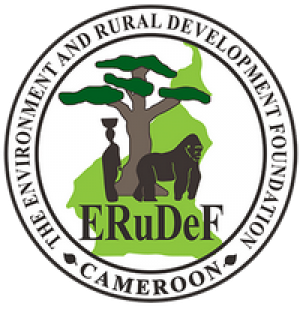
Chiefs and traditional rulers of communities within the Mouamenem clan (in the Mount Muanenguba area) in the Littoral Region, Cameroon have banned the collection/harvesting of Chameleons for the international pet trade in their communities. This ban was placed recently following an observed reduction in the number of Chameleon for cultural activities within this area.
Locals attributed this drastic drop in chameleon to the high engagement of youths in international pet trade in the species, generally done without export permits. They interpreted this gradual depletion to mean a gradual extinction of their culture, and so could not remain indifferent. “Any youth caught harvesting chameleons for pet trade will be brought before the council of elders for judgment. If found guilty, they will be requested to pay fines ranging from providing pigs to huge sums of money,” one of the chiefs hinted.
Speaking to The Green Vision recently, an elite of the Mouamenan clan, Mr. Martin Epse, said an adult is termed a ‘man’ in this area only after eating a Chameleon. This act according him, is performed under the supervision of initiated elders, who take the young man in question through some traditional rituals before coking the chameleon for him to eat. “It is only after eating a chameleon that you can be called a man,” he quipped. The Mount Muanenguba area has recently been recommended to the Ministry of Forestry and Wildlife and the Ministry of Culture as a World Heritage Site on the basis of the cultural values of numerous traditional societies.
Mount Muanenguba, which cuts across the Southwest and Littoral regions of Cameroon is said to have a heterogeneous Ecosystem, harbouring 100 species of amphibians, 89 species of reptiles and 270 bird species amongst which 60% of them are endemic. The mountain with height of 2411 meters above sea level, suffers chronic threats from communities living adjacent to the mountain. Habitat degradation, which involves conversion of natural land for agricultural land through shifting cultivation, destruction of trees for commercial purposes, overgrazing and trespassing of cattle in streams and water ponds, collection of amphibian and reptile species, amongst others, are the main threats rocking the mountain.
Faced with all of these challenges, Cameroon’s leading conservation NGO, the Environment and Rural Development Foundation (ERuDeF), joined forces with the Cameroon Herpetology-Conservation Biology Foundation (CAMHERP-CBF) to conserve the rich biodiversity and Ecosystem of Mount Muanenguba with focus on Amphibians and Reptiles.
The identification and integration of good cultural practices into conservation management programs and other components of the utilised biological diversity, is therefore indispensable in the achievements of conservation goals within the Proposed Mount Muanenguba Herpetological Sanctuary.
By Acham Stanley & B. Shancho Ndimuh
